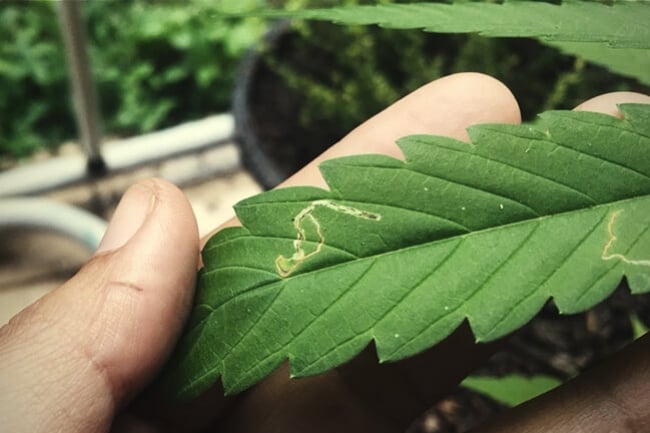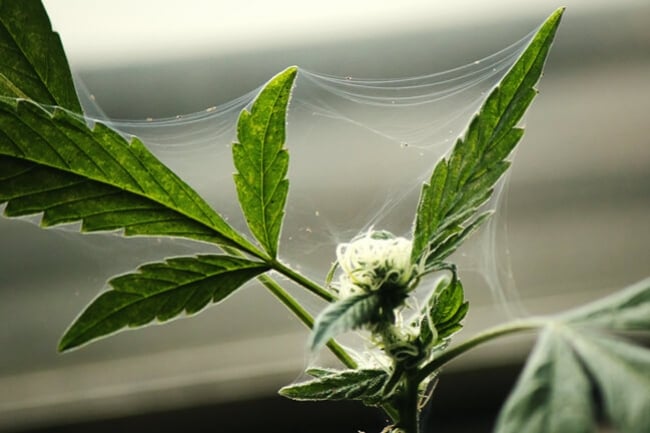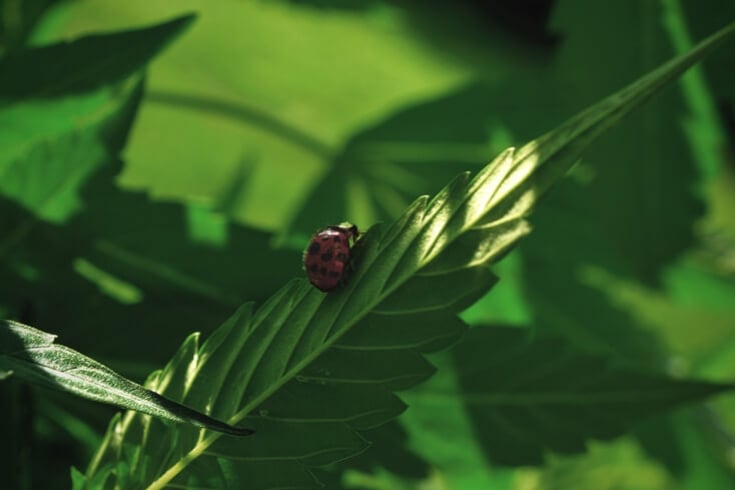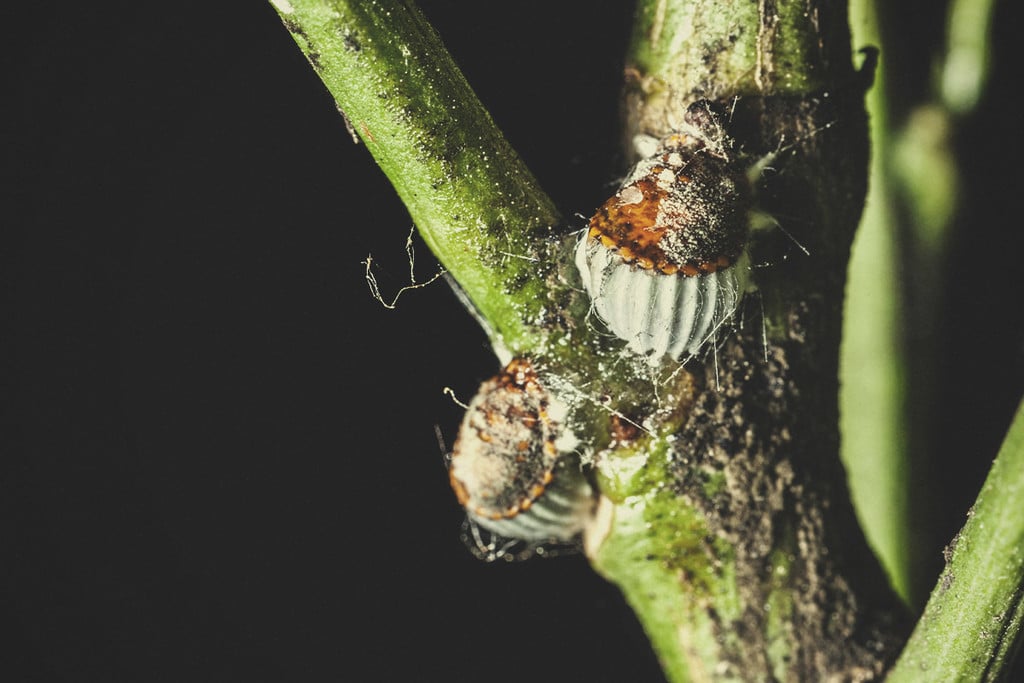.
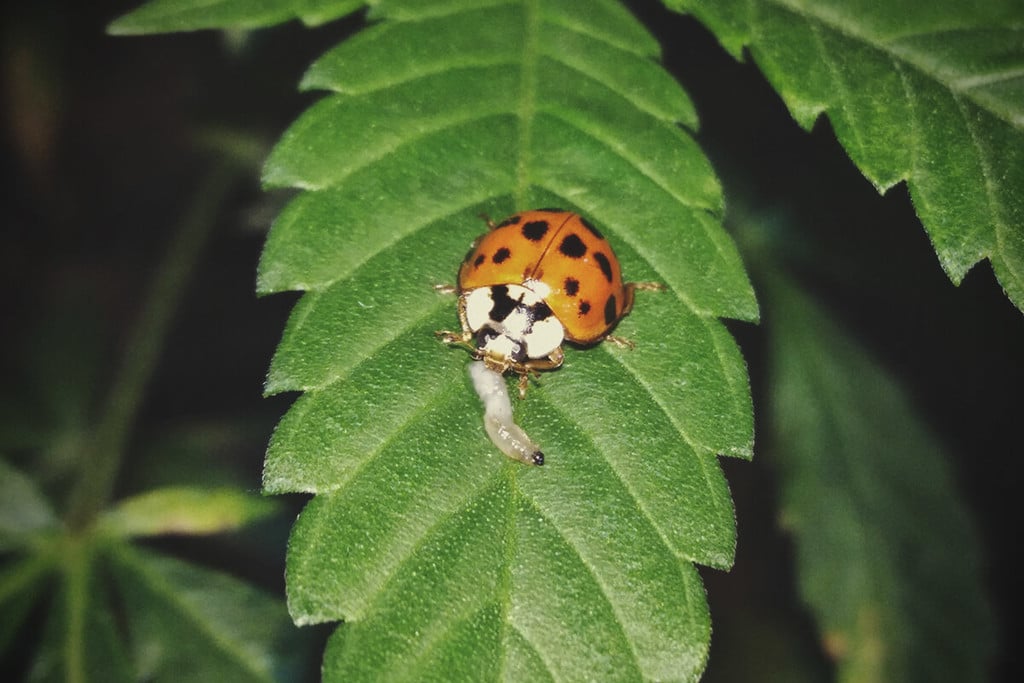
How To Use Insects To Protect Your Cannabis Plants
Pest insects are one of the biggest factors when it comes to failed cannabis crops. Pests eat cannabis roots, strip leaves bare, and even go after the buds. Instead of relying solely on home remedies, you can use predatory insects, an effective biological control practice, to reduce pest populations in a natural and sustainable way.
Contents:
Cannabis growers often fear the presence of insects, anticipating crop damage, reduced yields, and weakened plants. While it is true that some insects wreak havoc in the garden, others actually do plants a world of good.
Beneficial insects help to keep the bad guys away. Predatory species hunt down pests and keep your cannabis plants from harm, while pollinators contribute to the fertilisation process. These life forms add to the biodiversity of a garden, a term that describes the wealth of life within a certain area.
Why bother with biodiversity? Because greater biodiversity contributes to a more resilient and productive ecosystem. If you set out to remove everything in your garden and spared only your prized plants, they would soon perish.
Every insect, worm, microbe, and weed make up the soil food web. This network of life moves nutrients from one life form to the next, until they end up in a form that plants can absorb. Adding and attracting beneficial insects to your garden helps to protect your cannabis plants, boost biodiversity, and improve the quality of your flowers.
Why Use Insects in Your Outdoor Cannabis Grow?
Beneficial insects help to create a better environment for your cannabis plants. By removing pests and nurturing companion plants, beneficial insects give cannabis a better shot at reaching its full potential.

The main benefits of using insects in your cannabis garden include:
- Pest control
- Pollination of edible plants
- Boosts biodiversity
- Prevents the spread of disease
Common Cannabis Pests That Insects Can Help With
There are a few usual suspects when it comes to insects that love to feast on cannabis plants. Thankfully, beneficial insects do a great job at lowering their populations. Common cannabis pests include:
- Aphids
- Fungus gnats
- Thrips
- Green flies
- Black flies
- Spider mites
- Caterpillars
- Whiteflies
How To Use Companion Plants To Attract Beneficial Insects
After learning about beneficial insects, you probably want to start introducing them into your garden. But how exactly do you get them there?
Catching insects with a net at a local park is inefficient and impractical for targeting the right species. Fortunately, if you simply grow certain plants that naturally attract beneficial insects, you can easily incorporate them into your garden.
Known as companion plants, these species draw in the good guys, improve soil health, capture nitrogen, and offer a harvest of their own. Common companion plants include:

- Thyme: This tasty culinary herb attracts butterflies, bees, and other beneficial insects. It’s low maintenance and produces compounds that help to protect the good guys.
- Dill: This herb protects against spider mites and caterpillars and attracts ladybugs—the ultimate aphid hunter!
- Borage: Bees love borage! The herb also draws in hoverflies. The larvae of this species love to eat aphids.
- Lavender: This herb produces a pleasant aroma and adds color to the garden. The flowers repel pests and attract beneficial species that protect cannabis plants.
- Dandelion: Often regarded as a weed, dandelion is actually a superfood. It adds a nutritional kick to salads and attracts hoverflies and beetles.
- Nasturtiums: This plant is easy to grow and puts out colorful flowers that serve as a landing platform for a host of beneficial insects.
Insects That Can Help Protect Cannabis Plants
The insects below have a place in every cannabis garden. While some of them might not live in your climate, chances are you’ll be able to benefit from at least a couple of these species.
Green Lacewings
Green lacewings are predators that chow down on a variety of pest species. These insects are named for their delicate flying apparatus and light green wings.
Adult green lacewings hibernate over the winter and lay their eggs in late spring and early summer. The adults take a vegetarian approach and feed on nectar, pollen, and honey. It is the larvae that have a penchant for bloodshed.
After hatching, these larvae patrol plants for soft-bodied insects such as aphids, thrips, whiteflies, leafhoppers, and spider mites. They feast for up to two weeks before spinning a cocoon and transitioning into adulthood.
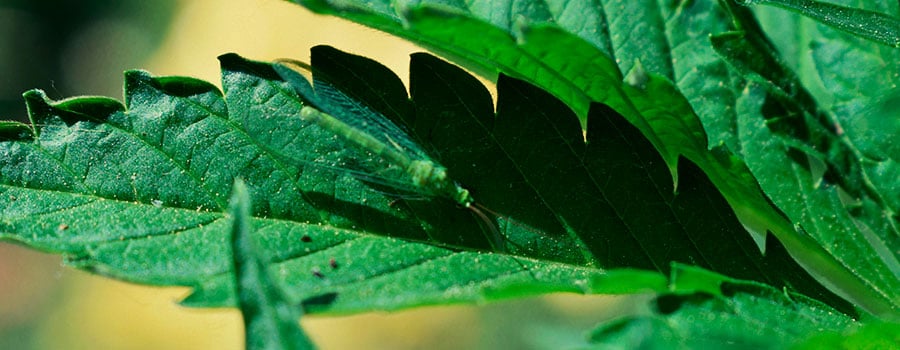
-
How To Use Green Lacewings in Cannabis Growing
Growers have the option to purchase green lacewing larvae to guarantee their presence in the garden. Bottles of larvae are available in different sizes and contain anywhere from 250–10,000 specimens.
Because they have such a short life cycle, it’s recommended to apply larvae as necessary to maintain their effectiveness in pest control. Pour the contents of a bottle directly onto aphid-affected plants to take care of the problem.
-
Companion Plants To Attract Green Lacewings
You can attract adult green lacewings to your garden using these companion plants:
- Dill
- Caraway
- Fennel
- Cilantro
Ladybugs
Ladybugs are a powerful pest management tool. Both the adult and larval forms make aphids a staple of their diet. Adult ladybugs have a lifespan of 2–3 years and eat up to 25 aphids per day. However, their late-stage larvae consume up to 250 aphids per day to fuel their growth spurts.
Ladybugs rely on aphids to survive and raise their young. They strategically lay their eggs among aphid colonies. When the larvae hatch, they immediately start feeding on these pests. Both adults and larvae also hunt down and devour the eggs of moths, beetles, mites, and thrips, thus providing comprehensive biological control in the garden.
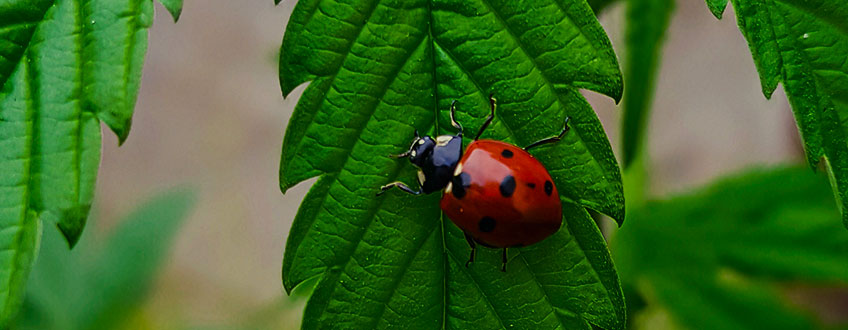
-
How To Use Ladybugs in Cannabis Growing
Cannabis growers can buy live ladybugs from nurseries and garden centers. Of course, these critters are able to fly away after being deployed. However, they are in constant search of water and nectar. To encourage them to stay, build a small homemade pond and plant colorful flowers to provide them with food. This will increase the likelihood of ladybugs staying.
-
Companion Plants To Attract Ladybugs
To attract and keep these aphid hunters in your garden, plant these companion species:
- Cilantro
- Chives
- Calendula
- Marigold
- Dill
- Yarrow
Praying Mantis
Praying mantises are masters of stealth and patience. Their mobile heads and big eyes enable them to scan their surroundings for food, while their bodies remain frozen still and camouflaged. They stalk their prey for days at a time and strike at the neck to dispatch their target. These skilled hunters will eat anything they can manage and have an affinity for aphids, caterpillars, and whiteflies.
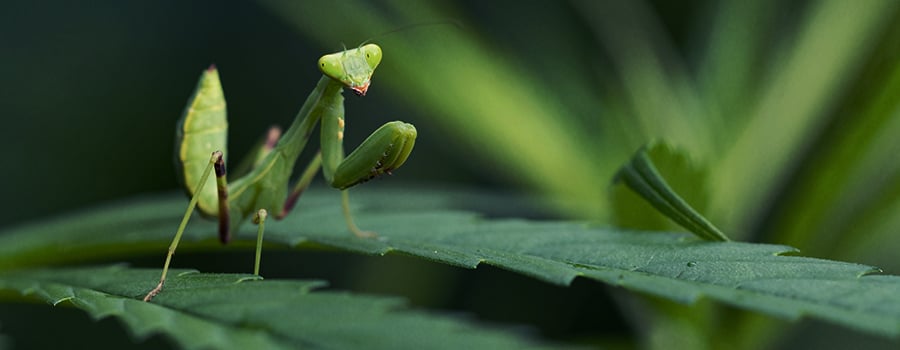
-
How To Use Praying Mantis in Cannabis Growing
Place praying mantis eggs throughout your garden to unleash a hoard of insect-killing machines. Hatching can take up to 6 weeks depending on the age of the eggs. One hatched, the young will disperse throughout the garden.
-
Companion Plants To Attract Praying Mantis
Praying mantises love large and bushy shrubs to use as homes and hunting grounds. Plant these species to attract them to your garden:
- Basil
- Rosemary
- Lavender
- Peppermint
Predatory Mites
The sight of mites is enough to send a grower’s heart rate through the roof. However, not all mites are bad! Predatory mites are an effective form of biological pest control and actively seek and destroy problematic species.
These beneficial creatures patrol cannabis plants and feed on the slower, herbivorous mites. Although they look similar, you can tell predatory mites apart by their shiny appearance and longer legs.
Spider mites do considerable damage and cause leaves to start falling off of plants. They pierce the surface of fan leaves and begin sucking out chlorophyll, leaving a fine, web-like substance in their wake (hence their name).

-
How To Use Predatory Mites in Cannabis Growing
Growers can use predatory mites to target spider mites with pinpoint accuracy. Instead of risking damaging your plants with wipes and sprays, apply a bottle of commercially available mites directly onto affected plants. Wait 7–10 days after taking this curative measure before applying again if needed.
-
Companion Plants To Attract Predatory Mites
There’s one plant that will attract more predatory mites to your garden than any other: mint[1]! Sow seeds directly into containers and place them around the borders of garden beds and greenhouses. Avoid sowing mint inside beds or directly in the ground, as it can quickly overrun a garden.
Assassin Bugs
Assassin bugs are devious hunters that use a combination of deceit and poison to kill their victims. They use their strong front legs to grab and pin down prey. Their mouths are designed to pierce their victims and suck out valuable proteins. As they penetrate flesh, they inject poisonous saliva that helps them finish the job.
After consuming the insides of one victim, they often wait by the body for more curious victims that can’t resist checking out the crime scene. Assassin bugs use these tactics to take down caterpillars, ladybugs, and different species of flies.
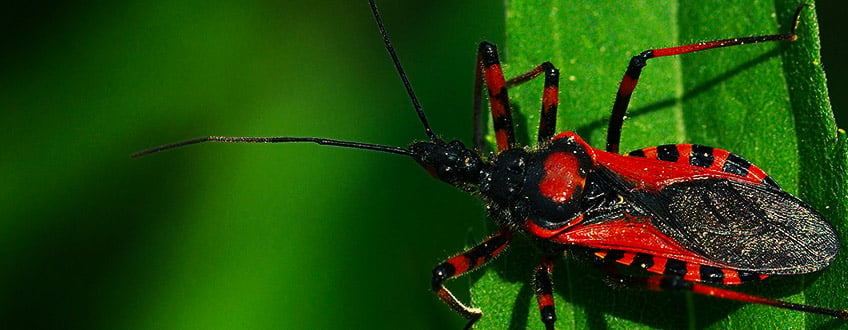
-
How To Use Assassin Bugs in Cannabis Growing
Place assassin bug egg clusters near foliage suffering from pest infestations. The eggs take up to 10 days to hatch. After emerging, these critters immediately begin to feed. They live for around 2 months and will help reduce pest populations during this time.
-
Companion Plants To Attract Assassin Bugs
Plant these species to attract assassin bugs to your garden:
- Queen Anne’s lace
- Daisies
- Alfalfa
- Marigolds
- Dandelions
- Goldenrod
- Fennel
- Dill
Nematodes
Nematodes are microscopic, worm-like creatures that live in the soil. These little wrigglers belong to two major categories. Plant-parasitic nematodes feed on root systems. They use their sharp mouth-parts to bore into roots and even live inside them.
Then there are the predatory nematodes. These good guys don’t need plant roots to survive. Instead, they make meals out of cannabis-eating pests such as slugs, beetles, cutworms, and moths.
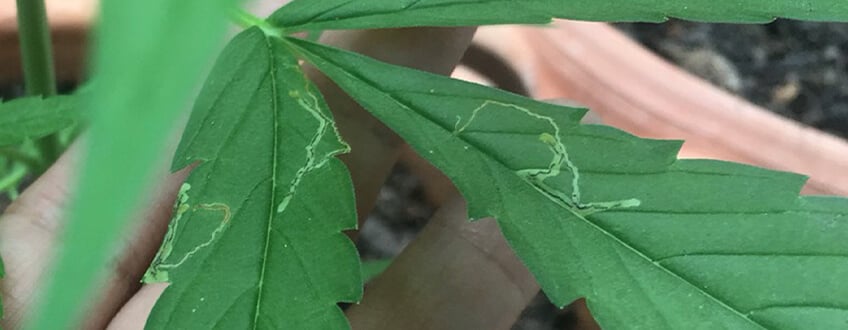
-
How To Use Nematodes in Cannabis Growing
Nematode products usually come in the form of a sponge. Place the sponge into a watering can and apply the solution to the affected areas of your cannabis patch.
-
Companion Plants To Attract Nematodes
After introducing predatory nematodes into your garden, you can keep them around by boosting diversity and providing an optimal environment. Mulch your soil with organic matter and sow cover crops such as white clover to keep the organisms shaded and protected.
Rove Beetles
Where weed growers see pests, rove beetles see dinner. These hungry predators feast on a variety of field and greenhouse pests, particularly fungus gnats.
Fungus gnats strike when cannabis plants are overwatered. They lay their eggs in the soil, and, upon hatching, the larvae take a fancy to fresh cannabis roots. These pests are especially problematic in wet regions where the soil rarely dries out.
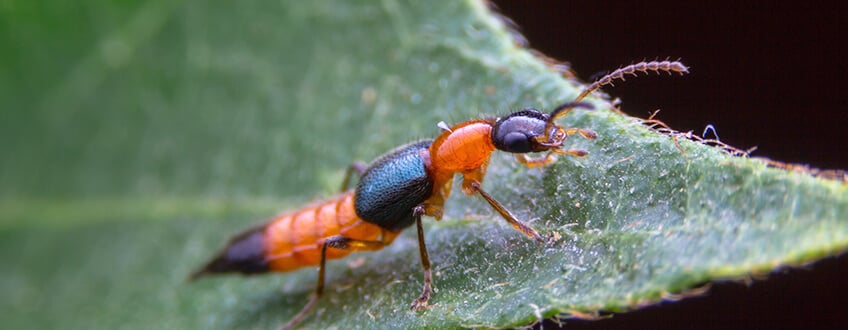
-
How To Use Rove Beetles in Cannabis Growing
If your roots are taking a hammering from fungus gnat larvae, recruit some rove beetles. Order a tube of them and empty onto affected areas. You can also use rove beetles to reduce populations of thrips.
-
Companion Plants To Attract Rove Beetles
Plant the following species in your garden to provide an attractive habitat for rove beetles:
- White clover cover crop (Trifolium repens)
- Red clover cover crop (Trifolium repens)
Biodiversity Is Key to Protecting Outdoor Cannabis Plants
The more life in your garden, the healthier your plants will be. Monocultures and chemical pesticides kill insects and microorganisms. When pest insects move in, there’s no other life to keep them in check.
A garden rich in biodiversity features a plethora of different species that hunt down and eat each other. This gives rise to a healthy and balanced ecosystem and reduces the chances of a certain pest population growing out of control.
Adding companion plants and beneficial insects to your garden will establish a healthy soil food web and provide an oasis of life in which your cannabis plants can thrive.
- Mint companion plants attract the predatory mite Phytoseiulus persimilis | Scientific Reports https://www.nature.com


























